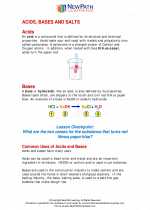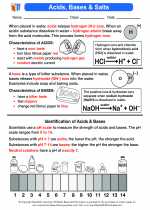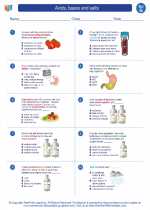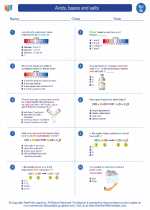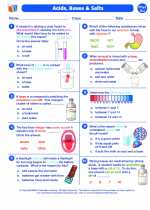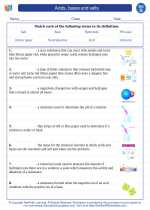Acids, Bases, and Salts
What are Acids?
Acids are a group of chemical compounds that have certain properties. They are sour in taste, turn blue litmus paper red, and have a pH less than 7. Acids release hydrogen ions (H+) when dissolved in water, and they can react with metals to form salts and hydrogen gas.
Common Acids
- Hydrochloric Acid (HCl)
- Sulfuric Acid (H2SO4)
- Nitric Acid (HNO3)
- Acetic Acid (CH3COOH)
What are Bases?
Bases, also known as alkalis, are another group of chemical compounds with distinctive properties. They are bitter in taste, feel slippery to the touch, turn red litmus paper blue, and have a pH greater than 7. Bases release hydroxide ions (OH-) when dissolved in water, and they can react with acids to form salts and water.
Common Bases
- Sodium Hydroxide (NaOH)
- Potassium Hydroxide (KOH)
- Calcium Hydroxide (Ca(OH)2)
- Ammonia (NH3)
What are Salts?
Salts are ionic compounds formed from the reaction between an acid and a base. They are composed of positive and negative ions held together by ionic bonds. Salts are often formed when the hydrogen ion of an acid is replaced by a metal ion or another positive ion.
Common Salts
- Sodium Chloride (NaCl)
- Calcium Carbonate (CaCO3)
- Potassium Nitrate (KNO3)
- Magnesium Sulfate (MgSO4)
pH Scale
The pH scale is a measure of the acidity or basicity of a solution. It ranges from 0 to 14, with 7 being neutral. Solutions with a pH less than 7 are acidic, while solutions with a pH greater than 7 are basic. The lower the pH, the more acidic the solution, and the higher the pH, the more basic the solution.
Study Guide
Here are some key points to remember about acids, bases, and salts:
- Acids have a sour taste, turn blue litmus paper red, and have a pH less than 7.
- Bases have a bitter taste, feel slippery, turn red litmus paper blue, and have a pH greater than 7.
- Salts are formed from the reaction between acids and bases, and they are ionic compounds.
- The pH scale measures the acidity or basicity of a solution, with 7 being neutral.
- Common acids include hydrochloric acid, sulfuric acid, and nitric acid.
- Common bases include sodium hydroxide, potassium hydroxide, and calcium hydroxide.
- Common salts include sodium chloride, calcium carbonate, and potassium nitrate.
Understanding acids, bases, and salts is crucial in various fields including chemistry, biology, and environmental science. It is important to be familiar with their properties, reactions, and uses.
.